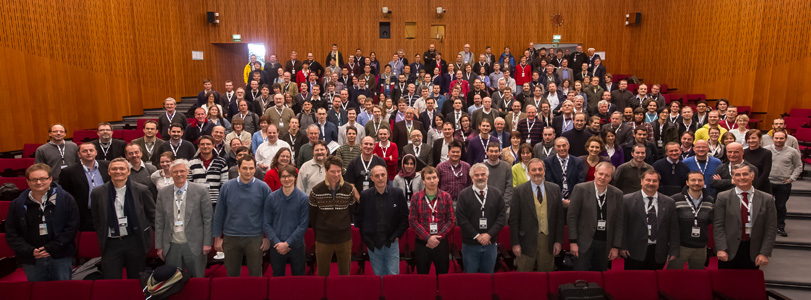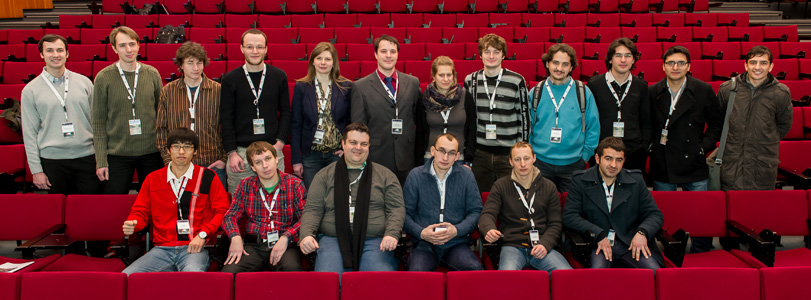Record attendance at DESY and European XFEL Users’ Meeting
This year’s users’ meeting of European XFEL and DESY photon science set up a new participant record. From 23 to 25 January, about 800 scientists participated in the conference.
This year’s users’ meeting of European XFEL and DESY photon science set up a new participant record. From 23 to 25 January, about 800 scientists participated in the conference to hear the latest news about the advances in construction and research at the European XFEL and the newest developments at the DESY light sources FLASH and PETRA III. More than 500 of them had registered for the first day, which was dedicated to European XFEL.
Persis Drell, director of SLAC National Accelerator Laboratory from 2007 to 2012 and currently a Helmholtz International Fellow at DESY, chaired the session on European XFEL instrument progress. “The high number of participants shows how exciting XFEL science is. It is opening up a new frontier”, Drell said. “We still have to learn how to take full advantage of this new technology, but when you improve brightness by many orders of magnitude, you can expect to see things you have never seen before”, Drell said referring to the extraordinary brilliance of free-electron lasers compared to conventional synchrotron X-ray sources.
“This year’s participant record at the users’ meeting shows the strong interest of a broad user community in the light sources at DESY and the European XFEL, which is in progress”, DESY research director Edgar Weckert stresses. “The research with photons is an extremely dynamic territory due to the rapid technological development in x-ray sources, which offers important contributions to the problem solving process in many scientific fields.”

Thomas Tschentscher, scientific director at European XFEL, was especially pleased about the high number of young scientists at the meeting. This year European XFEL was able to support more than 45 of them with travel grants – almost twice as many as in 2012. “We want to make the coming generation of scientists aware of the huge potential and research opportunities XFELs offer,” he said.
Priorities of the meeting were, among others, future experiment stations at the European XFEL as well as at the extensions of DESY’s light sources FLASH and PETRA III. In addition, latest scientific results were presented in satellites and a group poster session. Junior scientists had the chance to get information about current job opportunities at the European XFEL.
